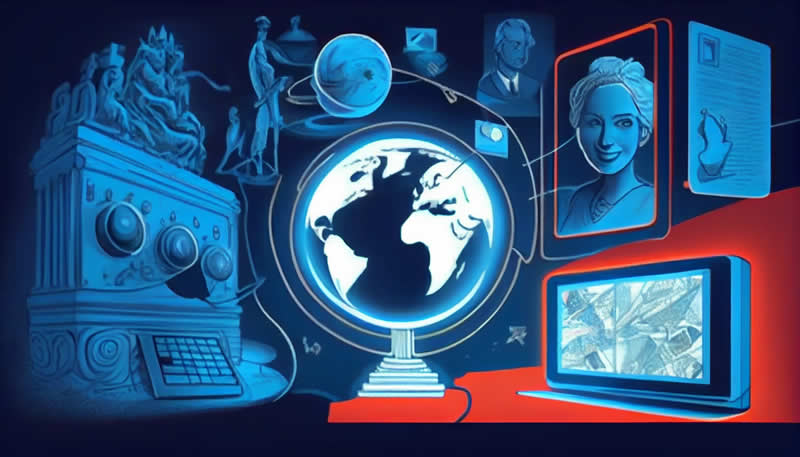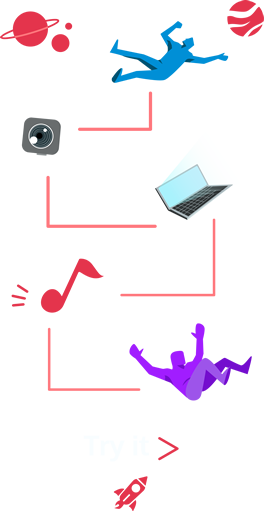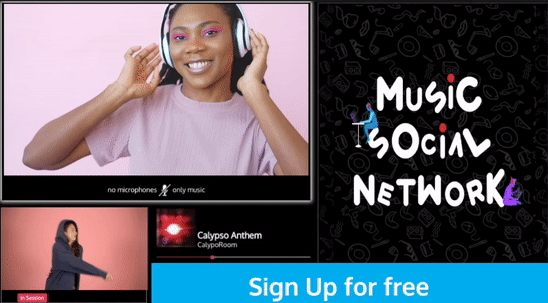From 1964 to CalypsoRoom: the epic evolution of video chat
Real-time visual communication, known as "video chat", enables people to converse with one another through the transmission of both video and audio.
It is a well-liked tool for both personal and commercial use since it enables individuals to see and hear each other from different areas of the world.
Individual discussions, group gatherings, and even huge webinars may all be conducted using video chat. As video chat technology has developed, obstacles caused by time and distance between people from various regions of the world may now be removed.

Video chat technology began to develop with the emergence of television at the turn of the 20th century. Unfortunately, the first visual teleconferencing systems were not developed until the 1960s and 1970s.
Only a few firms were able to afford or use these early systems since they were cumbersome and costly. Web-based video chat services were made possible by the development of the internet in the 1990s, which made it simpler and more accessible for people to utilize. Since that time, video chat technology has developed quickly and is now a commonplace communication tool in the current era.
In the twenty-first century, video chat has taken the place of traditional forms of communication as a crucial tool for connecting people.
Video chat is an essential tool for long-distance relationships, remote employment, and education since it enables users to conduct face-to-face talks with others from any place.
Moreover, it enables companies to interact with customers and workers located all over the world, enhancing communication and teamwork.
The ability to interact with therapists and support groups from the comfort of one's home via video chat has also grown to be a crucial mental health tool.
Early years of video chat
The first video teleconferencing systems developed in the 1960s and 1970s utilizing satellite and microwave technologies to send visual signals across large distances. Corporations and the government tended to utilize these systems because of their high cost.
As the internet initially gained popularity in the 1990s, the first web-based video chat services were developed. CU-SeeMe, a piece of software created by Cornell University in 1992, was the first of these.
Another pioneering video chat software program was Microsoft NetMeeting. Despite having subpar video quality and slow internet connections in its early iterations, this application paved the way for the later development of more advanced video chat technology.
Video chat had a lot of problems at first that made it hard for people to use. One of the biggest problems was the cost and availability of high-speed internet connections, which were needed for video chat to work well.

Video chat required expensive hardware and software, which made it hard for many people to use. Lastly, people worried about privacy and safety because people could potentially listen in on or record video chats. As the technology for video chat got better and these problems were fixed, more and more people started using it.
Growth and expansion of video chat
Internet speed and capacity increases have accelerated video chat technologies in the 21st century. This resulted in better video and audio transmission software and hardware.
Video chat technology included screen sharing, virtual backdrops, and video recording. Mobile video chat apps were also created for on-the-go communication. These advances made video chat easier and more accessible, increasing its popularity and acceptance.
Skype and Google Hangouts appeared in the mid-2000s. These services enabled internet communication without additional software or hardware.

Instant chat and file sharing made them complete communication tools, and small enterprises and freelancers liked web-based video chat for remote meetings and cooperation.
Over the 2010s, video chat technology became more accessible and popular and social networks that added video chat drove this explosion. Facebook and Instagram, for instance, started to allow users to live broadcast their experiences.
Bumble, Tinder, and other dating apps added video chat functionality that enable people to meet face-to-face online before any possible offline date.
CalypsoRoom reached the point to allow people from all over the world to connect and listen to the same song in real time, connected by webcams. Those are only a few examples of many individuals using video chat to stay in touch with family, friends, and coworkers worldwide.
Integration of video chat into social media platforms
Social networking sites are progressively integrating video chat. Users may now chat in real time and share their experiences more immersively thanks to this integration.
For instance, on CalypsoRoom, music artists can promote their music directly face-to-face with their super fans, no matter where they are in the world.
Video chat allows businesses to communicate with consumers and advertise their products and services on social media like never before.

Video chat has developed into a potent tool for influencers and content producers too, thanks to the emergence of live streaming, enabling them to connect with their viewers and grow more loyal fan bases.
This technology is set to become an increasingly important medium for communication on social media as it develops further, both for personal and professional use.
The entertainment sector has been significantly impacted by video chat, which has changed how we consume and interact with media.
Video chat has made it feasible for individuals to communicate with their favorite artists and entertainers in real time like it happens in CalypsoRoom, enabling more engaging and individualized entertainment experiences.
With online multiplayer games and live streaming platforms enabling players to communicate with each other from anywhere in the globe, video chat has had a huge influence on the gaming business as well.
Video chat during the COVID-19 pandemic
Video chat has become a crucial tool for communication during the COVID-19 epidemic as people all over the world have been forced to adjust to new ways of living and working.
Video chat has been a lifeline for preserving social ties and being productive in an environment where social distancing policies are in place and many individuals work and study from home.

Video chat has made it feasible for businesses to hold remote meetings and go on with operations while also enabling family and friends to keep in touch even when they are geographically apart.
In the healthcare sector, video chat has been essential in eliminating the need for in-person visits by allowing physicians and other medical professionals to consult with patients remotely.
Video chat has been a vital link to the outside world and has allowed individuals to stay connected, informed, and supported during the epidemic, even if it has been a trying time for many.
The future of video chat
Video chat is going to become even more immersive and participatory as technology advances and virtual reality and augmented reality gain popularity.
Conversations between people will be possible in more intriguing and realistic circumstances. People will be able to utilize video chat more conveniently and from any location thanks to the expansion of high-speed internet and mobile connectivity.

Virtual assistants and chatbots might make video chat even more user-friendly and personalized as artificial intelligence and natural language processing advance.
The future of video chat is promising, despite issues like concerns about privacy and the digital divide that still need to be resolved. The way we study, work, and interact with one another might all be altered by this technology.
The epic evolution of video chat - Conclusion
Since its conception, video chat has advanced significantly, changing how we connect, communicate, collaborate, and learn.
From the early days of video conferencing to its current use with social media, video chat has and will continue to improve and change, making it an important tool for all of us to use in our personal and professional lives.
We hope you enjoyed reading this post, and if you'd like more technology related article, please visit our blog section.
In CalypsoRoom we believe music is the most powerful tool to bring people together, and that’s why we created a music social network online where you can meet friends or new people starting from the same song, listening to the music simultaneously connected by webcam. Check it out!
Thanks for reading,
CalypsoRoom Team
Frequently Asked Questions
What is video chat?
Video chat is a form of real-time communication that allows individuals to interact with each other through audio and visual signals transmitted over the internet.
What were the initial difficulties with video chat?
Early issues with video chat were the price and accessibility of high-speed internet connections, which are necessary for it to function well, as well as the expense of the equipment and software required to utilize it. Concerns about security and privacy also existed.
What changes has video chat undergone over time?
Since its debut, video chat has seen a considerable evolution as a result of improvements in hardware and software for video and audio transmission brought about by increases in internet speed and capacity. Mobile video chat programs have been developed for on-the-go communication, and features like screen sharing, virtual backgrounds, and video recording have been introduced.
Which platforms are most widely used for video chat?
FaceTime, Zoom, Google Hangouts, and Skype are a few of the widely used video chat applications. Video chat has been included into the services of social media sites like CalypsoRoom allowing people to listen to the same music simultaneously from anywhere in the world.
How has video chatting been impacted by the COVID-19 pandemic?
The COVID-19 epidemic has forced people to alter their way of living and working around the globe. Video chat has thus developed into a crucial tool for communication. For staying in touch with friends and family, as well as for working and studying from a distance, video chat has been a lifeline.
back
Written by CalypsoRoom Editorial Team
The CalypsoRoom Editorial Team is a skilled and diverse group of writers, researchers, and industry specialists who have access to Calypso's data and information in order to give you broad knowledge about the music industry as well as helpful advice to help you manage your music and dancing career.
Updated January 2023
Company number: 681223
James's Walk 31, Dublin, Ireland
contact@calypsoroom.com
+353 (89) 435 8928





